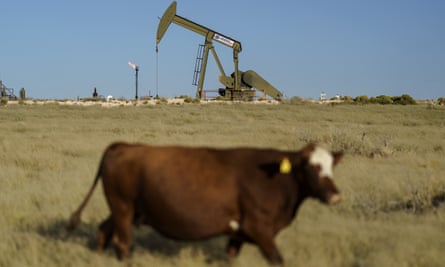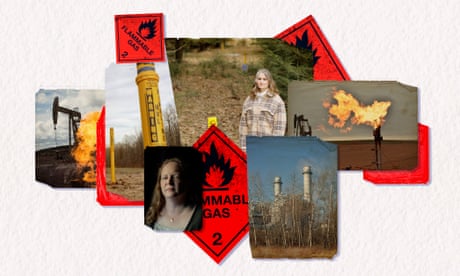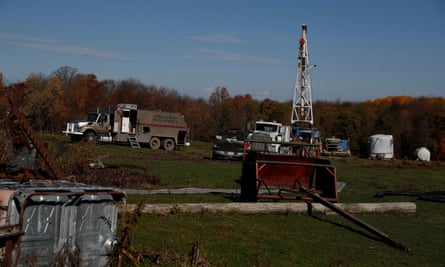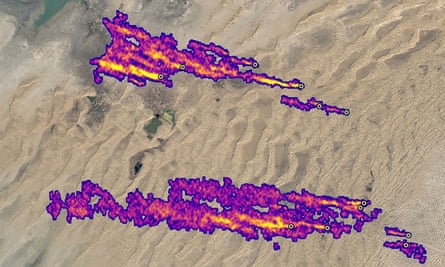My message to Benjamin Netanyahu: stop your coup or we’ll stop the country

Plans for the Israeli judicial system are an anti-democratic coup – and will be resisted
- Amid growing protests about plans to overhaul Israel’s judicial system, the author and academic Yuval Noah Harari addressed a pro-democracy demonstration in Tel Aviv on Saturday. This is an edited version of his speech
W
Today we have an excellent reason to be afraid, and we have an excellent reason to act. Don’t let anybody fool you: what this government is carrying out is not a judicial reform, it is an anti-democratic coup. This is exactly what a coup looks like.
Coups are not always carried out with tanks in the streets. Many coups in history were carried out behind closed doors with pens and papers, and by the time people understood the meaning of what was written in those papers – it was too late to resist.
History is full of dictatorships established by people who first came to power through legal means. It’s the oldest trick in the book: first you use the law to gain power, then you use your power to distort the law. When examined together, the laws this government is currently legislating have one simple meaning (and you don’t need a PhD in law to get it): if these laws are passed, the government will have the power to completely destroy our freedom.
Sixty-one members of Knesset [the Israeli parliament, with 120 members] could pass any racist, oppressive and anti-democratic law they think of; 61 members of Knesset could also change the electoral system, to stop us from replacing the regime. When we ask the leaders of this coup what will keep the power of the government in check under the new regime, and what will protect basic human rights, they only have one answer: “trust us”.
Prime Minister Netanyahu, Justice Minister Levin, MK Rothman, chair of the constitution committee, we do not trust you! You’re tearing to shreds the contract that has somehow held our society together for 75 years, and then you expect us to trust you?
We don’t trust you, because we know very well what you want. You want unlimited power. You want to shut us up and to tell us how to live, what to eat, what to wear, what to think and even who to love.
But you don’t understand who you’re dealing with. Israelis are not good raw material for making slaves [The enslavement of the ancient Hebrews is a core part of Jewish holy texts, remembered especially at the festival of Passover]. We Israelis are stubborn, we’re free-spirited, and nobody has ever managed to shut us up. We will not allow you to turn Israel into a dictatorship.

So what will happen over the coming weeks?
They will go on trying to pass their dictatorial laws. They will also go on calling us “anarchists” and “traitors”, and exploiting or even initiating extreme events in order to suppress the resistance. On our side, we will continue to protest, and to make sure that the supreme court judges have both the popular backing and the determination to strike down these dictatorial laws.
And what if the government refuses to accept the ruling of the supreme court? Then we enter a constitutional crisis. A constitutional crisis in uncharted territory, devoid of clear rules and laws. Who will the police take orders from – the government or the court? Who will the Shin Bet and the Mossad take orders from? Who will the Israel Defence Forces (IDF) obey? And the most important question of all – what will the citizens do?
The opinion polls are clear: a large majority of Israelis oppose what this government is doing. But polls don’t stop dictatorships. History teaches us that the last and most important line of defence in every democracy is you, the citizens.
Democracy is a deal, according to which citizens must respect the government’s decisions, on the condition that the government respects the basic liberties of the citizens. When one side breaks the deal, the other side doesn’t have to go on fulfilling its part. When a government tries to establish a dictatorship, citizens are allowed to resist.
This is a historical test for the citizens of Israel, and if we fail it, we will not be given a second chance. We must raise our heads now – or keep our heads down for the rest of our lives. We must raise our voices now – or keep our mouths shut for the rest of our lives. This is the time to protest, to shout, and also – to stand still.
For example, as a university professor, I hope that as long as this anti-democratic coup goes on, all academic establishments in Israel will go on strike. We must, of course, continue to support our students in these troubled times, but this is the moment to halt all regular courses, and teach only about democracy, human rights and freedom.
If some of us find it difficult to go on an official strike, I am convinced that as Israelis, we will find creative ways to drag our feet and to ignore orders. Each one of us can throw a little wrench in the gears of the anti-democratic coup.
Finally, as a typical Israeli, since I was given the microphone, I would like to take this opportunity to send some personal messages. To Esther Hayut, chief justice of the supreme court, and to Gali Baharav-Miara, the attorney general, you have been entrusted with one of the most difficult and most important missions in the history of Israel. This is a huge responsibility, but also a big privilege. This is your moment to make history. Don’t hesitate and don’t back down: protect our freedom.
To President Herzog and to the heads of the opposition parties – safeguard our freedom, and don’t compromise on it. When a tiger comes to devour us, we cannot negotiate a compromise whereby the tiger will only eat half of our body. To reserve IDF soldiers who are considering what they can do – don’t serve dictators! Your contract is with Israeli democracy, not with its undertakers.
To the IDF, the Shin Bet, the Mossad, and the Israeli police – if the moment of truth comes, make the right choice. Go down in history as the protectors of the citizens – not as the servants of despots.
To all the demonstrators who came here tonight and to dozens of other protests throughout Israel – I just want to say I love you.
And last but not least, I want to convey a clear message from all of us to Netanyahu, Levin, Rothman and their colleagues – true, you have 64 fingers in the Knesset, but that doesn’t mean you’re allowed to shove these fingers anywhere you like. Keep your hands off our freedom.
Stop the coup – or we will stop the country.
Yuval Noah Harari is a historian and the author of Sapiens, Homo Deus and Unstoppable Us
My Comments :
1. The highly educated protester is completely wrong in his
basic analyses of "Israeli society", for Israel is the poisonous
legacy of a settler-colonial construct, based on the reli-racist notion, that
Jews are an apart and superior race of super-humans (*).
2.
Super-humans, equipped with a sacred divine mission for humanity and
therefor are being permitted, to submit the indigenous population of Palestine
forcefully to exactly that – socially, politically and judicially - inferior
position, that he is fearing the Netanyahu government will (also) impose on the
Israeli Jewish population, when he is not been stopped immediately and
conclusively in his tracks by the jewish israeli inhabitants and their
supporters from elsewhere.
3. Crucial
Question : Why is the indigenous Palestinian people not permitted to call
(and fight for with all means possible) for the same kind of freedom and basic
rights, that the professor has been reserving for the Jewish Israeli
population.
4. Following from
that observation, we do need to conclude that Israel is not, nor has ever been
a true and authentic democratic society - but has been an apartheid state from
its very origin - because it does principally and consequently exclude the
non-Jewish part of its population from the very democratic privileges and Human
Rights, that Jews (from all over the world) are being granted
automatically.
5. What the
hypocritical protesting professor really is afraid of, is that all these forms
of violent repression, that have been developed over the past decades and
systematically used against the violently suppressed Palestinian population,
will also be imposed on the Jewish population, once Netanyahu will get his 61
majority in the Knesset, for the anti-democratic laws he intends to impose.
6. Netanyahu,
whose very father after all had been the personal secretary of the notoriously
racial fascist Jakobinski - an ardent admirer of Mussolini - who did propagate
concepts like the Iron Wall and the Iron Fist, that indeed have been established
by his fanatic followers (of Likud), against the indigenous
Palestinians.
7. The
hypocritical protester is not alone in his unexpected and explicit call for
ending the malicious machinations of Netanyahu and his extreme-right fascist
coalition cabinet of settlers-colonialists, for all of a sudden we do see
politicians and organisations (with a Jewish background that is) from many
countries in Europe (like the UK Labour politician and IHRA specialist Hodge
and the Dutch Hashbara factory CIDI, to mention just a few), fiercely
protesting - not only against the dangerous plans of Netanyahu for
Jewish-Israeli citizens (do not forget in this respect the dual citizenship
that every Jewish person does inherit from its very birth) but – against the
treatment of the Israeli governments of the Palestinians as second class
citizens.
8. What all these
born again protesters are also afraid of is, that Israel will be confronted by
increasing calls from the world at large for implementing even harder BDS measures,
which will ultimately cripple the existence of the settler state out of
existence, or provoke the implementation of some kind of Samson Option.
(*) Not only do the
ardent Zionists claim to be the representatives superior race, but in addition,
they claim to be the authentic offspring of the biblical inhabitants of the Palestinian
territory, which by the way, has not only been sufficiently rebuked by DNA
specialists like Zoosman-Diskin, but it also does not match with the historic
facts around the so-called Diaspora thesis : modern time Jews are descendants
from proselytical processes from the past.
Happily an increasing number
of Jews are becoming more and more aware of these facts and do distance
themselves from the violent and racist settler project in the Middle East, and
are resisting the jewish leaders, that are propagating this dangerous
project.
However, many of those Jewish
believers, who are often protesting against the (Jewish- and Christian-) Zionist
majority at their own expense, for they are taking the risk of being harshly
opposed by the Israel lobby in and outside the former Palestine mandate.




